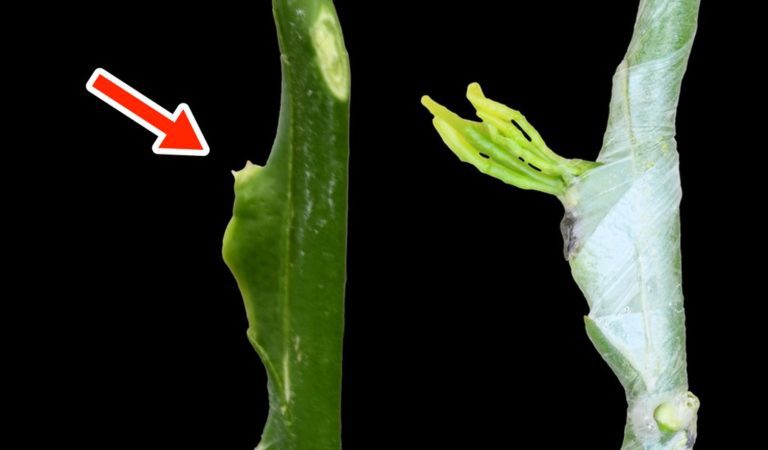Growing Citrus from Cuttings – Rooting and Grafting Citrus in One Step
This guide to growing citrus from cuttings shows how to root and graft a citrus tree in one step.

Success in rooting citrus trees from cuttings requires the proper temperature, humidity, light levels, and rooting hormone. This guide shows how to grow citrus from cuttings with a good success rate at home without a greenhouse and without accidentally bringing a deadly citrus disease into your yard.
Growing Citrus from Cuttings – Rooting and Grafting Citrus – YouTube Video
In addition to this step-by-step guide, I have also made a YouTube video (see below) showing how to grow citrus trees from cuttings by rooting and grafting in one step. If you plan to try this yourself, be sure to read the rest of the article to learn some helpful details on rooting citrus cuttings that are not in the video.
Materials for Rooting Citrus Trees
I have set up a web page that lists the products that I used to successfully root citrus trees. You can find it here: Products for rooting citrus.
Grafting Citrus in a California Citrus Production Nursery
The best citrus trees are grafted to unite a roostock that produces superior roots with a scion that produces superior fruit. I first observed citrus trees being rooted and grafted in one step in a California citrus production nursery. A whip graft was used to connect the rootstock to the scion. A rubber band was used to hold the scion and rootstock closely together during the healing of the graft.
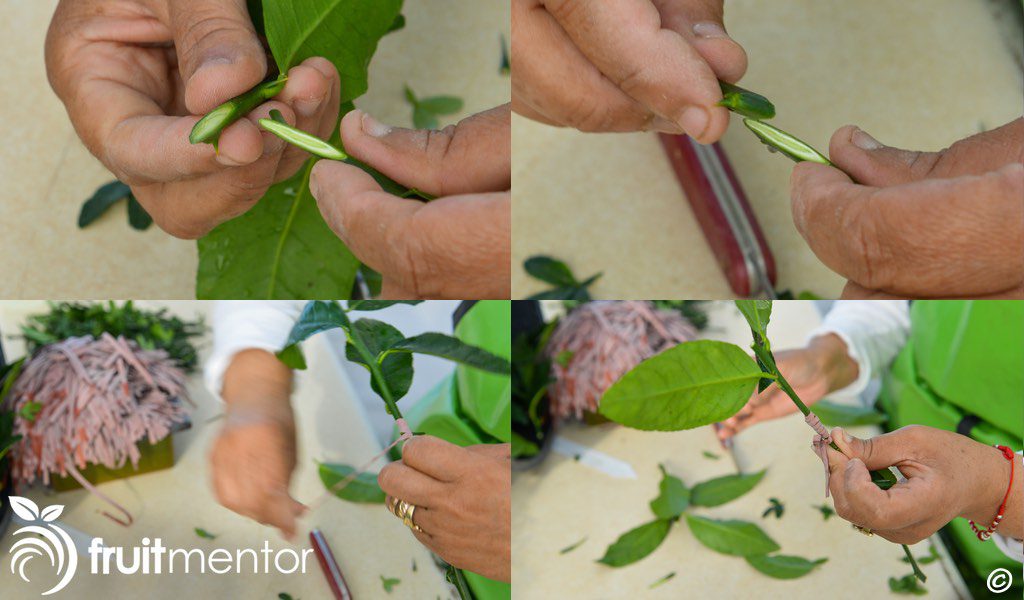
Grafting with Disease Free Citrus Budwood
In California we now have a disease called huanglongbing that is 100% fatal to citrus trees. It reduces the life expectancy of citrus trees from hundreds of years down to around 5 years. In its early stages, the disease is very difficult to detect, but still extremely contagious. We also have insects called citrus psyllids that spread the disease. The disease is also easily spread by human movement of citrus trees and cuttings.
Because of the severe disease problem in California, all citrus cuttings used for the propagation of citrus in California are required to originate in an insect-resistant structure from trees that have been tested and shown to be free of disease. This is the case for both citrus nurseries and also for hobbyists. The below photo shows the nursery's tested source trees inside an insect-resistant structure.

Application of Rooting Hormone
The bottom of the rootstock is chopped off before application of the rooting hormone.

Then the grafted cuttings are dipped in a powdered rooting hormone and planted in a rooting medium.

Citrus Cuttings Rooting in the Nursery
To get roots to grow the cuttings require the correct temperature, humidity, and amount of light. In the citrus production nursery this is achieved by bottom heat and mist every 15 minutes.

Growing Citrus from Cuttings at Home
I do not have a greenhouse, but after seeing citrus cuttings being grafted and rooted in a nursery, I wanted to see if I could do it myself at home in my garage.
Disease-free Citrus Cuttings for Hobbyists
A vegetatively propagated tree will have any diseases present in the mother tree. To avoid accidental outbreaks of disease, hobbyists in California who propagate citrus now order cuttings from a program called the Citrus Clonal Protection Program or CCPP instead of taking cuttings from trees outside. Citrus cuttings from the CCPP come from tested trees in insect-resistant structures. I ordered my citrus cuttings for my home citrus propagation experiment from the CCPP.
Much of the world now shares California’s problem with citrus disease. The CCPP will ship budwood anywhere in the world where the local laws allow it. Many citrus growing regions where CCPP budwood is not allowed have their own disease-free citrus budwood programs. Here I have created a web page that lists some other programs: Citrus Budwood Programs.
The below YouTube video goes through in detail the process of setting up an account and placing a budwood order with CCPP.
Disinfecting Grafting Tools
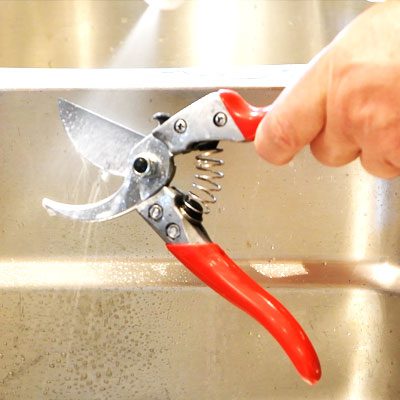
In order to both maximize the probability that the graft lives and also to prevent the spread of disease, it is important to disinfect grafting tools. To learn more about disinfecting grafting tools, please see the following link: Disinfecting Grafting Tools.
Making my own Pots
To observe the growth of the roots, I made my own pots from clear plastic cups. I drilled holes for drainage and cut off the lips to pack them more tightly.

Rooting Medium for Citrus Cuttings
Coconut coir is the ideal rooting medium for citrus. Coconut coir is a recycled waste product made from coconut husks. It comes in dry bricks that are expanded by adding water. It works well for rooting because of its ability to retain a large amount of water.

Creating the Conditions for Success
To achieve the ideal temperature of 80 degrees Fahrenheit or 26.7 degrees Celsius, I put my planting tray on top of a heated mat on top of a piece of rigid insulation. A thermostat measures the temperature and turns on the heating mat when the temperature is below the ideal temperature. To maintain high humidity I covered my plants with a clear storage container.

Preparation
Before I started, I pre-cut parafilm-M for wrapping the graft and mixed the liquid rooting hormone. I used a ratio of one part concentrated rooting hormone to four parts water.

Grafting and Rooting the Citrus Cuttings
For my graft I used a grafting technique called Z grafting. I found the Z graft especially useful because it allowed me to join oddly-shaped cuttings together easily. I wrapped the grafts with parafilm-M and a rubber band. Next I cut off the bottom of the rootstock, dipped it in rooting hormone, and then planted the grafted citrus tree.

Misting the Plants
Next I set up my heating pad, tray, and thermostat. Then I added the plants, misted them, and placed the temperature probe.

I added my cover to maintain a humid environment. I found that it was adequate to water and mist the plants every one or two days

Buds Growing
Within a couple of weeks, many of the buds on the cuttings began to grow. This is a good sign, but roots take longer to grow.

Roots
Success
Within a few months, I had some plants that were growing roots. I gradually reduced the humidity for the plants with roots before repotting them outside. Once outside I gradually increased the amount of light to avoid shocking the plants.

Improving the Success Rate
I was excited to succeed with some of the plants. Most of the plants failed to grow roots, however. My success rate rooting this first batch of plants was only around 10%. I had used T12 fluorescent lights and one theory was that they did not produce enough light to induce rooting in most of the plants.

I upgraded to T5 fluorescent lights to see if I could get these plants to root. It was summertime and the added heat from the T5 lights was enough to increase the temperature to a fatal level for citrus plants. I decided to try again with another batch of plants in the winter when the temperatures in my garage would be lower.
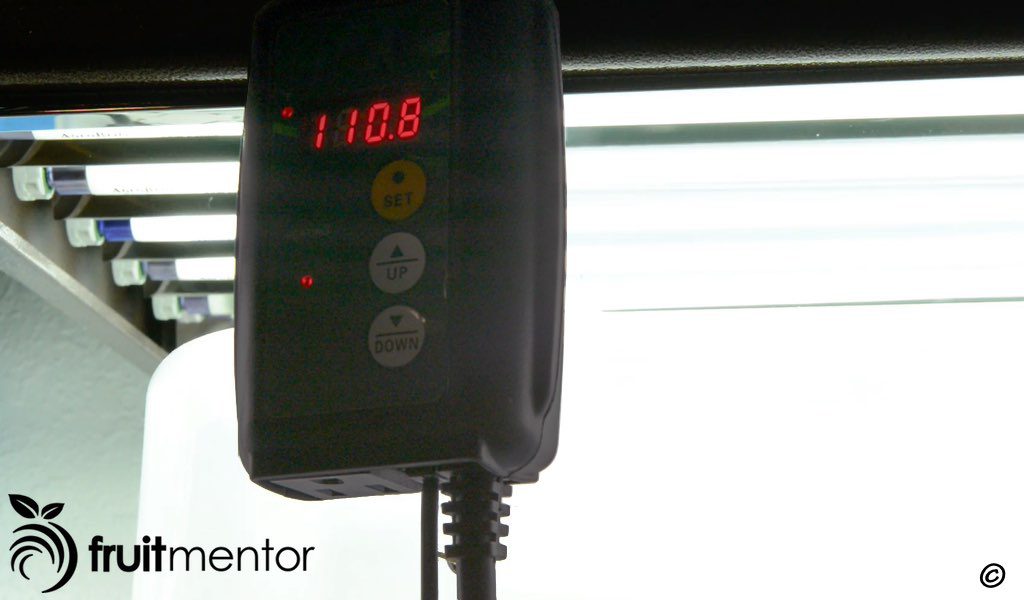
Good Success Rate
I grafted my second batch of trees in winter so that cooler air could balance the heat generated by the T5 lights. I switched to a new temperature controller that could control both the heating mat and also a fan to keep the temperature in the right range. I also set my timer for 14 hours per day of light. In my previous attempt with the T12 lights I had used 18 hours per day of light. Plants need a certain amount of darkness and 14 hours per day of light is a safer day length to avoid stressing the plants.
The new setup increased my success rate from around 10% to between 60% and 70%.
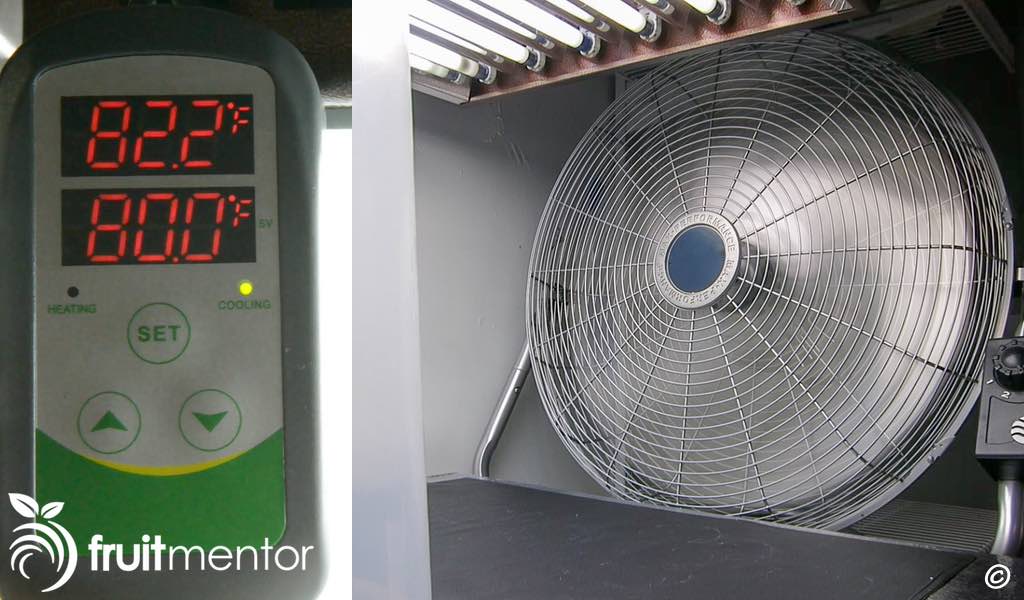
Rooted Plants
Here are the first rooted plants of my second batch ready to plant in bigger pots. In the second batch of plants I experimented with rockwool and smaller containers in addition to my plastic cups. Although I succeeded with the rockwool and the smaller containers, I prefer the cups when watering by hand because the rooting medium dries out more slowly due to the larger volume.

Further Experiments on Rooting Citrus
Since I originally published this article, I have performed more experiments on rooting citrus cuttings that you can read about in this article. What I have learned is that the success rate varies significantly depending upon which citrus rootstock is being rooted. My favorite rootstocks for growing the most delicious oranges, mandarins, pummelos, and grapefruits have a poor success rate. There are also other factors out of my control such as the amount of carbohydrates in the cutting to be rooted. Based on these further experiments I do not recommend rooting citrus rootstocks. For grafting citrus I recommend either rootstocks grown from seed or small trees from a reputable nursery.
Keeping Home-Propagated Citrus Trees at Home
To stop the spread of the deadly huanglongbing disease, it is important to keep home-propagated citrus trees at home. Citrus trees in California and any part of the world that has citrus psyllids are vulnerable outside of an insect-resistant structure. Although the use of the disease-free cuttings ensures that the trees start without disease, they can easily be infected by citrus psyllids which are so small as to escape notice. Keeping the trees at home will help to avoid accidental outbreaks of disease in new areas.
Save Trees by Sharing
Please share this article with anyone that you think may be interested in growing citrus trees from cuttings. Knowledge of the importance of using a registered disease-free budwood source when propagating citrus cuttings will help to prevent the accidental spread of huanglongbing and other citrus diseases and will save trees.
Resources for Californians
Please visit CaliforniaCitrusThreat.org for more information on how to stop the spread of deadly citrus disease.
California Law Regarding Citrus Propagation
In California, the collection of any citrus propagative materials, including budwood and seeds, from non-registered sources is illegal. Any citrus trees grown or grafted in California must come from source trees registered with either:
- The Citrus Nursery Stock Pest Cleanliness Program, administered by the California Department of Food and Agriculture, or
- The Citrus Clonal Protection Program, located at the University of California at Riverside.
Acknowledgement
Thank you very much to Rock Christiano of CCPP who correctly theorized that the low rooting rate in my initial setup was because of low light levels. Rock also suggested the 14 hour day length to avoid stressing the plants.
Funding
This article was funded by a grant from California’s Citrus Research Board.






